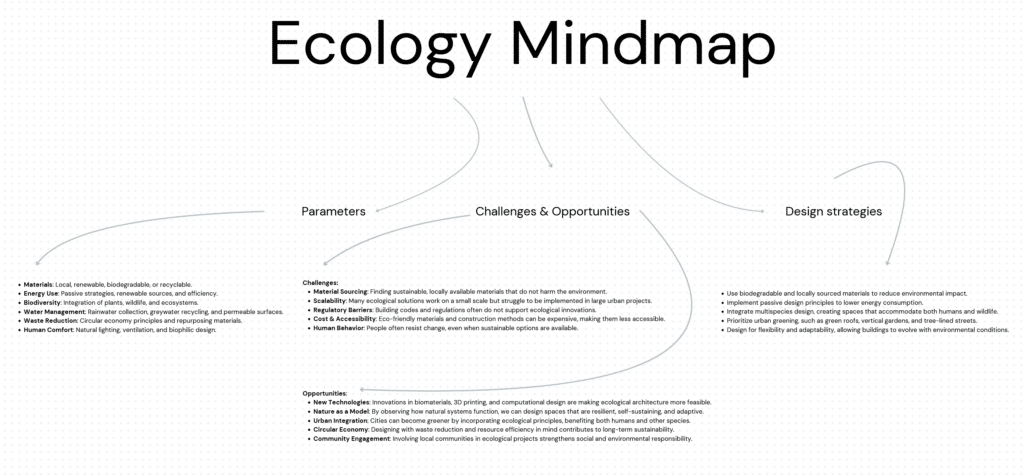Learning Ecological Design is the very reason I applied for this master’s program at Valldaura Labs. We constantly talk about ecology, yet I feel that many—including myself—haven’t truly explored what it means beyond surface-level choices like buying “eco-friendly” products or taking shorter showers. Studying ecological design has pushed me to reconsider my role within ecological systems. Rather than seeing myself as an outsider using sustainable products, I am learning to recognize that I am part of an ecological system—not separate from it. This shift in perspective is crucial because it moves from passive consumerism to active participation in ecological networks through design.
The primary challenge of ecological design is finding a balance between human comfort and respect for natural systems. Modern industry and capitalism operate within their own self-sustaining ecosystems, often prioritizing efficiency and profit over environmental impact. Architecture, on the other hand, is inherently disruptive but has the potential to remain in dialogue with its surroundings.

Ecological design is deeply interconnected with the other topics we have explored. Multispecies design expands ecological design by considering non-human users of space, ensuring biodiversity thrives alongside urban development. Biodesign takes this further by using living organisms as part of design solutions, such as algae-based facades or mushroom-based insulation. Vernacular architecture teaches us that traditional building techniques often align naturally with ecological principles, using local materials and passive strategies long before sustainability became a buzzword. Adaptation vs. mitigation in climate strategy aligns with ecological design’s goal of not only reducing harm but also creating resilient and adaptive environments. Lastly, urban greening is a direct application of ecological design, demonstrating how simple interventions like planting trees and restoring soil can have profound impacts on cities and their inhabitants.
After exploring these topics, one lesson stands out: everything is connected. It is difficult to draw clear boundaries between ecological design, multispecies considerations, and urban adaptation because all these concepts feed into each other. The challenge ahead is to integrate these ideas without overcomplicating them. Sometimes, the simplest solutions—like planting more trees or designing with local materials—are the most effective. The key is not just designing for nature but designing with nature, ensuring that the built environment is in harmony with the ecosystems that sustain it.

